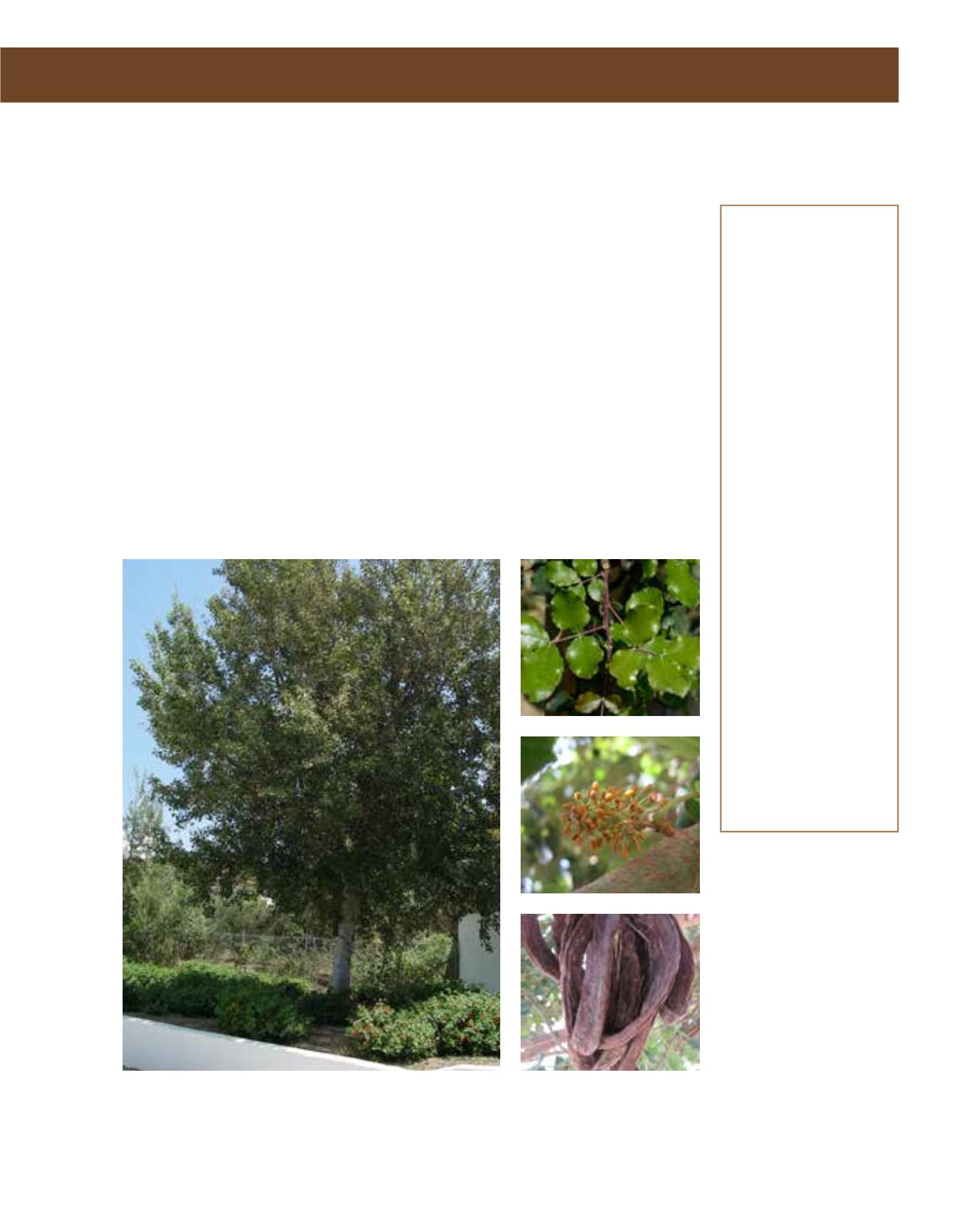

GENERAL
Origin
:
Mediterranean
Vigour
:
normal growth
rate
Humidity
:
semi-arid, semi-
humid
Propagation :
sowing and
pricking out,
aerial layering
Maintenance :
moderate
CONDITIONS
Urban climate :
vulnerable
Dessication :
vulnerable
Stagnant water :
vulnerable
Irrigation
:
medium
Salinity/ppm :
moderate (1800
ppm)
Hardiness
:
-3°C
SHAPE
Type
:
tree, shrub
Height
:
4 m-10 m
Spread
:
5 m-10 m
Foliage
:
evergreen
FLOWER
Colour
:
pale yellow,
pastel red
Size
:
10 cm
Period
:
August - October
Smell
:
scented,
malodorous,
gives freely of
its scent, flower,
sweet
FRUIT
Type of fruit :
pod
Fruit size
:
10 cm - 30 cm
Toxicity
:
edible when
processed, fruit
This evergreen tree, known in Arabic as carob and English as St. John’s Bread, used to be native
to the Arabian Peninsula as a wild variety. The Egyptians cultivated it 4,000 years ago. Nowadays,
it can be found in the Mediterranean and in southern Europe. It is, however, only seldom seen in
the Arriyadh region, sometimes on farms or in sheltered private gardens, and is probably more
suitable for a coastal setting. Carob is a tall shrub or tree which grows up to 10 metres high with
an equal spread, and has a dense crown. It is slow-growing and often multi-stemmed. There are
both male and female trees (the pods appear on the latter). The dark-green leaves are pinnate with
up to ten glossy oval leaflets. The flowers appear in small clusters in late summer on pale-yellow
racemes directly on the stem and branches. The fruit is more imposing, and gives the tree its
name. Huge, green and later dark-brown elongated pods hang all over the tree. C. siliqua grows
on sandy, limey soil with good drainage and is highly salt-tolerant. It does require some humidity,
but once established it is relatively drought-tolerant, because of its deep tap roots. It is sensitive to
frost. In ancient times, people in the Middle East used to weigh gold and gems against the seeds
of the carob tree, which was known in Greece as keration. C. siliqua is propagated by seed and
cuttings. Ceratonia is a beautiful specimen shade tree for parks and private gardens. The root
zone should be thoroughly soaked once per month. All parts of the tree create litter.
94
Ceratonia siliqua,
Caesalpiniaceae
Carob Tree,
St. John’s Bread, carob, qarmatt
















